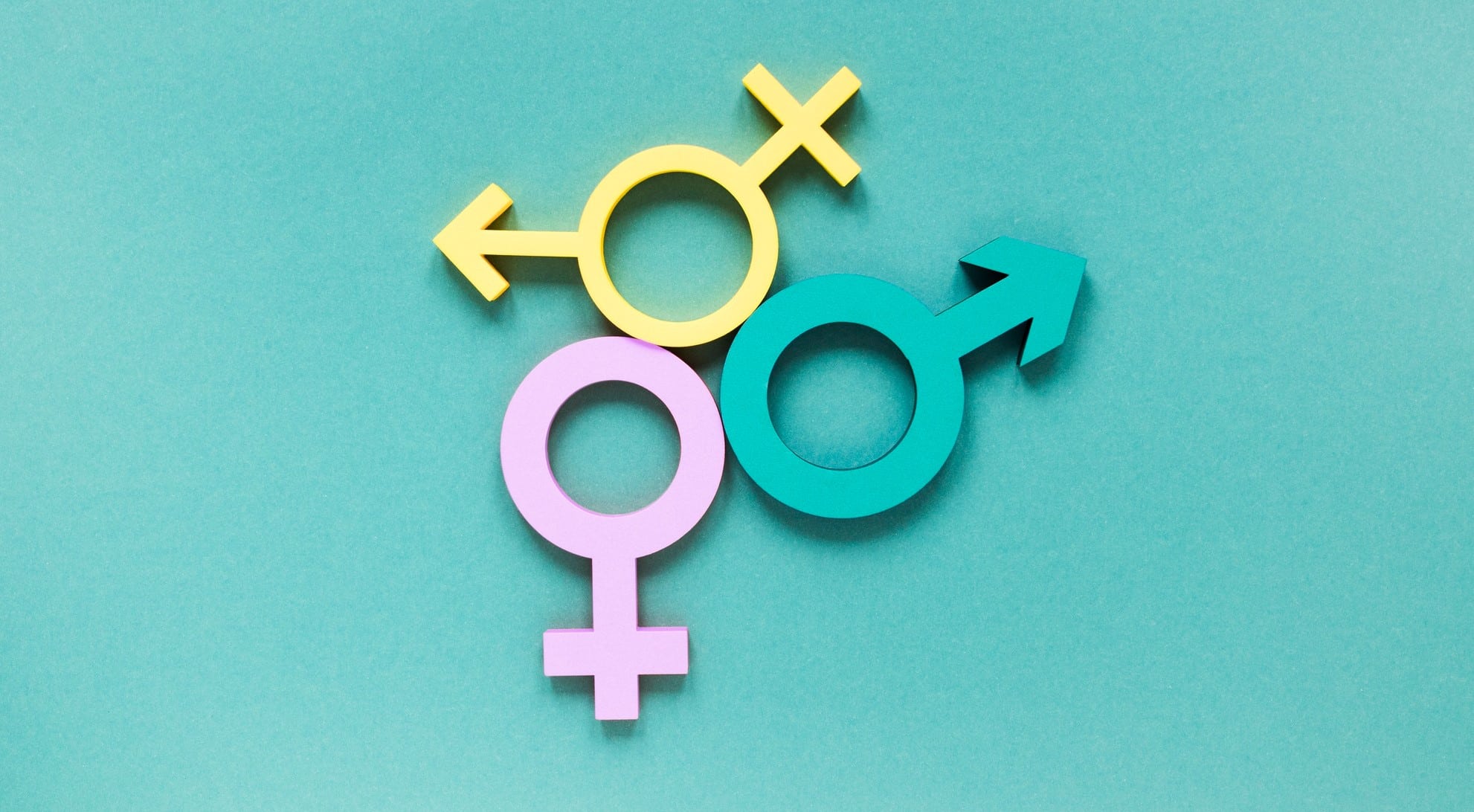What is gender and how can we measure it? Is science sexist? During the first Cobra training event Dr. Susanne Fuchs discussed questions such as these in her lecture series titled ‘Gender in Science’.
What is gender?
Dr. Susanne Fuchs began her presentation by highlighting perhaps the most important fact about gender: it is not the same as sex. Sex is biological and is based on genes, organs, and hormones, whereas gender is socially constructed. While sex is often considered binary, this is not the case: like gender, it can be thought of as a spectrum (see image below). For most people, their sex and gender overlap: these people, typically referred to as cisgender, identify with the gender assigned to them at birth that falls on the same side of the spectrum as their sex. However, for many other people, this is not the case. These people are often referred to as ‘transgender’ individuals, though this is an umbrella term and identities such as ‘non-binary’, ‘gender-fluid’, or ‘agender’ also exist. It is estimated that approximately 0,1% to 2% of people are gender non-conforming, i.e. not cisgender [1], though numbers vary between studies based on definitions and methodologies. Furthermore, studies likely underestimate the number of gender non-conforming people as some may not be ‘out’ due to transphobia or stigma.

Sex and gender in linguistics research
It is important not to confound sex and gender. However, it is more difficult to ‘measure’ gender in an experiment than it is to determine someone’s sex. Dr. Fuchs suggested thinking about gender along multiple dimensions and mentioned that many scales used for ‘measuring’ gender rely on traditional gender roles and stereotypes, for example, that men are aggressive and rough while women are gentle and caring. Such gender stereotypes are extremely pervasive: for example, even in example stimuli presented in linguistics papers, men’s names were more likely to be mentioned in ‘aggressive’ sentences, whereas women’s names more often occurred with descriptions of their appearance.
Distinguishing between sex and gender is important in linguistics research since both can affect language and speech. For example, individuals who were assigned male at birth tend to have a higher body mass, longer vocal cords, and larger lung volumes than people who were assigned female at birth. Especially in speech research, it is important to take this into account, as these anatomical features can influence the way someone speaks. For example, shorter vocal cords and a lower body mass are associated with a higher pitch. Though this could explain why women typically have a higher pitch than men, it is important to remember that social factors, such as gender, also play a role in speech. For example, gender is known to influence speech rate: contrary to popular belief, men typically speak faster than women. In other words, sex and gender can influence language and speech in different ways, and it is important to distinguish between sex and gender in (linguistics) research.
Combatting the gender bias in science
Sex and gender can be the objects of research, but also impact the scientific world on a completely different level. Science is not exempt from gender bias and the sexism that occurs in the rest of the world. One particular way in which the gender bias becomes obvious in science is the gender data gap: more data is collected from male participants, and for example, in medicine, the ‘standard’ patient is a white man. The fact that the world is built for white men not only harms our economy, it also extremely harmful to women – and especially women of colour. The gender data gap can cost lives as well as money. Dr. Fuchs recommends the book ‘Invisible Women’ by Caroline Criado Pérez for more information on how the gender data gap shapes our world. One example is that many algorithms are trained on data from white men, which makes such algorithms significantly less objective than is often thought. Increasing diversity in participant samples, both in terms of gender and race, is thus essential to reduce data bias.
Gender bias can not only (unintentionally) affect research results, it can also affect researchers themselves. Fortunately, there are ways in which we can help combat gender bias in the scientific community: for example, we can check whether there is a balance in the gender of invited speakers at conferences. If not, we can write the organisers to bring the lack of gender diversity to their awareness. Another way to improve gender bias in science is by balancing our citations: men are often cited more than women. Dr. Fuchs showed us the Gender Balance Assessment Tool that can be used to check how gender-balanced citations are.
The advice Dr. Fuchs provided can be summarised as follows: we should be aware of gender stereotypes and bias, we should try and combat them where possible, but most importantly, we should be patient with others (and ourselves!) as we move towards equality.
Follow us on Twitter (@CobraNetwork) and Instagram (@conversationalbrainsmscaitn) to stay up to date.
Author: Joanna Kruyt, ESR11, @_JoannaK_
Editors: Lena-Marie Huttner, ESR1,@lena_hutter, Greta Gandolfi, ESR6, @greta_gandolfi
If you want to know more about our projects and the ESRs working on them, please look under the Training tab.
References
Goodman, M., Adams, N., Corneil, T., Kreukels, B., Motmans, J., & Coleman, E. (2019). Size and distribution of transgender and gender nonconforming populations: a narrative review. Endocrinology and Metabolism Clinics, 48(2), 303-321.
Featured image ‘colourful equal rights symbol concept’ via freepik




